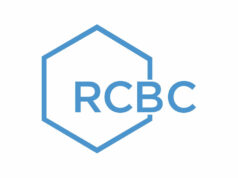Yields end flat ahead of inflation data
By Mark T. Amoguis Researcher
YIELDS on government securities (GS) traded in the secondary market were flat last week as market players remained defensive in anticipation of the April inflation report released on Friday.
Prices dipped slightly as bond yields inched up by an average of 1.24 basis points (bps) week on week, data from the Philippine Dealing and Exchange Corp. as of May 4 showed.
“Supply, inflation data and policy expectations triggered the slight uptick in yields across the board this week,” Carlyn Therese X. Dulay, head of Institutional Sales at Security Bank Corp. said on Friday.
“Market remained defensive ahead of the inflation data and stayed defensive after the 4.5% print, which was within market expectations,” she added.
“The market remained quiet most of the week while waiting for the April inflation figure that was released [last Friday]. The market also expected the FOMC (Federal Open Market Committee) to leave fed rates unchanged and that just what happened. This left most investors staying on the sidelines, only with a few trades,” said Ruben Carlo O. Asuncion, chief economist at UnionBank of the Philippines.
“But yields were pushed lower with stronger demand after the inflation figure was released today as a more hawkish BSP (Bangko Sentral ng Pilipinas) has been recently observed,” Mr. Asuncion added.
Guian Angelo S. Dumalagan, market economist at Land Bank of the Philippines (LANDBANK), said on Friday: “GS yields increased this week, as rising inflation rates in the US and the Philippines prompted policy makers from both countries to a adopt a more hawkish tone in their latest public communications.”
“BSP Governor Espenilla recently commented that price pressures have somewhat broadened. His remark, together with the uptick in Philippine inflation in April 2018, increased the likelihood of a rate hike on May 10,” he said.
The Philippine Statistics Authority on Friday reported that April headline inflation continued to rise at 4.5% year on year, compared to 4.3% in March and 3.2% in April 2017, on the back of high prices of food and tobacco as well as alcoholic and non-alcoholic beverages. Last month’s figure was the fastest in at least five years under the 2012-based consumer price index.
The April print brought the year-to-date average to 4.1% — already beyond the government’s 2-4% target band for 2018.
Ahead of the data, BSP Governor Nestor A. Espenilla, Jr. said latest observations bared that inflation is becoming broader than initially expected.
“What we react to is whether it’s spreading and it is affecting expectations. And our reading, based on the latest data, it seems to have spread somewhat,” Mr. Espenilla said last week.
Meanwhile, the US Federal Reserve, through its policy-setting body FOMC, held interest rates steady at the conclusion of its two-day policy meeting last Wednesday. The US central bank last raised rates in March by a quarter of a percentage point to a target range of 1.50-1.75%. It forecasts two more rate increases this year.
At the secondary market on Friday, the yield on the five-year Treasury bond (T-bond) increased the most, rising 12 bps to fetch 5.4743%, followed by four-year T-bond, which climbed by 10.32 bps to 5.5982%.
Likewise, yields on the 364-day, two-year, 182-day, three-, and 20-year notes rose by 5.94 bps, 1.96 bps, 1.93 bps, 0.69 bp, and 0.18 bp, respectively, fetching rates of 3.9159%, 4.2946%, 3.8478%, 4.5804%, and 7.2214%.
The rate of the 91-day Treasury bill, meanwhile, declined by 8.73 bps to 3.4068%, followed by the 10- and seven-year T-bonds, which fell by 6.75 bps and 5.11 bps, respectively, to 6.1377% and 5.755%.
Economists and analysts expect yields to climb this week as market players await the first-quarter gross domestic product (GDP) report and the BSP Monetary Board’s policy meeting, which are both scheduled on May 10.
“Expect market levels to remain range bound with limited upward bias depending on the results of [this] week’s auction and ahead of BSP’s policy meeting where consensus is for a rate hike,” Security Bank’s Ms. Dulay said.
“Yields are expected to still move with an upward bias [this] week, fuelled by a possible rate hike from the BSP and an upbeat Philippine GDP growth report,” LANDBANK’s Mr. Dumalagan said.
“Likely firm US inflation data might also give yields some upward push by increasing the chances of more aggressive moves from the US Federal Reserve this year,” he added.
For his part, UnionBank’s Mr. Asuncion expects “trading to be higher than [last] week as the market looks to the BSP and its decision on monetary policy.”
He added that the BSP “is anticipated not to raise rates [this] week but will look for more signs as there was a deceleration in the seasonally adjusted month-on-month inflation that maybe a sign that begins to confirm its forecast that inflationary pressures are transitory but will be elevated for most of 2018.”
The central bank has kept its policy rates on hold since September 2014, save for procedural adjustments introduced in June 2016 for the term deposit facility. Benchmark rates currently range from 2.5-3.5%.



